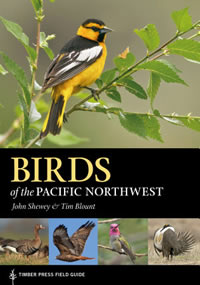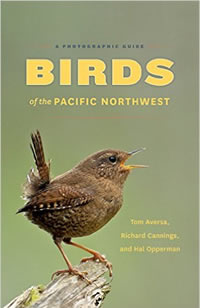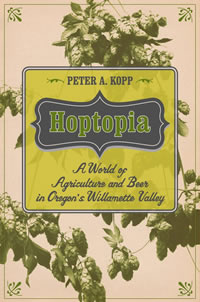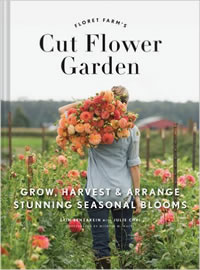 The popularity of birding in our region sparked the release of two new birding books with nearly identical titles by major regional publishers. “Birds of the Pacific Northwest: A Photographic Guide” by Tom Aversa, Richard Cannings, and Hal Opperman was published in 2016 by the Seattle Audubon Society and the University of Washington Press. In 2017, Timber Press continued their Field Guide series with this book, “Birds of the Pacific Northwest,” by John Shewey and Tim Blount.
The popularity of birding in our region sparked the release of two new birding books with nearly identical titles by major regional publishers. “Birds of the Pacific Northwest: A Photographic Guide” by Tom Aversa, Richard Cannings, and Hal Opperman was published in 2016 by the Seattle Audubon Society and the University of Washington Press. In 2017, Timber Press continued their Field Guide series with this book, “Birds of the Pacific Northwest,” by John Shewey and Tim Blount.
Confusing? Yes, and as a minimal birder, I don’t feel qualified to make a recommendation between the two, especially as to my eye there are more similarities than differences. If you are serious about identifying the birds in your garden or on your local travels, you clearly need both books!
The photography is one of the outstanding features of both, and the photos capture a very wide range of species, often with multiple images to show variation in sexes, juveniles, breeding plumage, and other color forms. Throughout there is help with identification between near look-alikes, and the authors address behaviors, bird songs, specifics on where to find rarer birds, and conservation status.
The Timber Press book includes helpful and practical introductions to most species. For example, in discussing the American Crow (Corvus brachyrhynchos) and the Northwestern Crow (C. caurinus) the authors conclude “… they are indistinguishable” and if you want to add the latter to your life list, going to the right location “…is the safe bet.” While on the large size for taking into the field, this book’s heavy cover will help protect it from the weather.
Excerpted from the Fall 2017 Arboretum Bulletin.
 The popularity of birding in our region sparked the release of two new birding books with nearly identical titles by major regional publishers. This book was published in 2016 by the Seattle Audubon Society and the University of Washington Press. In 2017, Timber Press continued their Field Guide series with “Birds of the Pacific Northwest,” by John Shewey and Tim Blount.
The popularity of birding in our region sparked the release of two new birding books with nearly identical titles by major regional publishers. This book was published in 2016 by the Seattle Audubon Society and the University of Washington Press. In 2017, Timber Press continued their Field Guide series with “Birds of the Pacific Northwest,” by John Shewey and Tim Blount.
Confusing? Yes, and as a minimal birder, I don’t feel qualified to make a recommendation between the two, especially as to my eye there are more similarities than differences. If you are serious about identifying the birds in your garden or on your local travels, you clearly need both books!
The photography is one of the outstanding features of both, and the photos capture a very wide range of species, often with multiple images to show variation in sexes, juveniles, breeding plumage, and other color forms. Throughout there is help with identification between near look-alikes, and the authors address behaviors, bird songs, specifics on where to find rarer birds, and conservation status.
The Audubon book includes an excellent essay on the climate, geology, and ecology of different sub-regions, especially as it pertains to the birds found there. It covers a bigger area, extending the region eastward to the continental divide. I like that each photograph includes both the location by county and the month taken.
Excerpted from the Fall 2017 Arboretum Bulletin.
 “Hoptopia” is the intriguing name of a well-researched and documented new book by Peter Kopp that tells the history of growing hops, especially in the Willamette Valley of Oregon. To set the stage, the author reviews the natural history of hops, including Humulus lupulus, a wide spread species throughout much of the north temperate world, but that is not found in our region.
“Hoptopia” is the intriguing name of a well-researched and documented new book by Peter Kopp that tells the history of growing hops, especially in the Willamette Valley of Oregon. To set the stage, the author reviews the natural history of hops, including Humulus lupulus, a wide spread species throughout much of the north temperate world, but that is not found in our region.
This all changed in the mid-19th century with the rise of the hops growing in both Oregon and Washington. Puyallup, Washington was an early center for this crop. Residents of that city are likely aware of their historic Meeker Mansion, but perhaps they do not know that its builder, Ezra Meeker, was the “Hop King” during the 1880s.
In the 20th century, prohibition threatened to destroy this industry. However, the opposite happened, because of the rising demand for the American crop in war-torn Europe. By the 1930s, hop growing was at its peak in the Willamette Valley, celebrated by the Hop Fiesta in Independence, Oregon, an event revived in this century. There were challenges, too. The extreme physical demands of harvesting hops led to strife between labor and management. Downy mildew required the breeding of resistant varieties, a process that did not have significant success until the 1970s.
Today, the center of hops growing has shifted back to Washington, as the greater Yakima Valley now is by far the largest producer of hops in the world. Meanwhile, Portland has proclaimed itself “Beervana” for its many small breweries as, according to Kopp, “…there is little question that the hop became the signature ingredient of the craft beer revolution.”
Excerpted from the Fall 2017 Arboretum Bulletin.
 “Mosaic and garden design have similar characteristics. They are each made of an assembly of pieces laid out in a certain way.” This is the premise of primary author Mark Brody in “Mosaic Garden Projects,” co-written with Sheila Ashdown. Both authors, along with photographer Justin Myers, whose work is a critical part of this book, are Portland residents.
“Mosaic and garden design have similar characteristics. They are each made of an assembly of pieces laid out in a certain way.” This is the premise of primary author Mark Brody in “Mosaic Garden Projects,” co-written with Sheila Ashdown. Both authors, along with photographer Justin Myers, whose work is a critical part of this book, are Portland residents.
Wisely, Brody starts his orderly series of lessons with defining your working space – it must be a dedicated as mosaics take room and some time to complete. You can’t just pick up the project to make room for dinner! You’ll need tools and, if you jump in with both feet, lots of tools and places to put them. Good lighting, excellent ventilation (some of the materials are smelly), and a handy source of water are other necessities.
If you’ve completed this checklist, you’re set to go. Excellent close-ups introduce the tools, the various types of tesserae (the pieces that make up the mosaic), and other critical parts. These include the substrate that supports your art, including the marvelously garden-sounding wedi (pronounced “weedy”) board, the adhesives to attach, and the grouts to fill in the gaps.
There are instructions on creating the image, with many templates to help, but filling the bulk of the book are projects. In my experience, many do-it-yourself books have a number of frivolous projects, but not this one. Each, from easy to challenging, has a place in your garden or nearby – the first and, according to Brody the easiest, is a mosaic of your house numbers to welcome your guests.
Excerpted from the Arboretum Bulletin.
 “Florets Farm’s Cut Flower Garden” is an excellent handbook to creating and running a very successful cut flower business on the model of Floret Farm in Washington’s Skagit Valley. However, if your goals are not quite so ambitious, there is still a lot of advice here for creating a cutting patch in your own garden and using the bounty for filling vases and many other purposes.
“Florets Farm’s Cut Flower Garden” is an excellent handbook to creating and running a very successful cut flower business on the model of Floret Farm in Washington’s Skagit Valley. However, if your goals are not quite so ambitious, there is still a lot of advice here for creating a cutting patch in your own garden and using the bounty for filling vases and many other purposes.
Primary author Erin Benzakein speaks from a lot of experience. Her farm began as a big patch of sweet peas, grown in memory of her beloved, gardening great-grandmother. Friends requested cut flowers. The tears and emotional memories evoked in one recipient was an epiphany for Benzakein. “In that moment, I realized that I’d found my calling. Witnessing the profound impact that a simple bouquet could have on a person, I knew I had discovered something worth pursuing.”
While the introduction prepares the reader for both the cultural and business side of cut flowers, the core of the book is the author’s choices of favorites and her hard-earned experience with each. And not just flowers. She encourages growing at least as many plants for their leaves, seed pods, colorful branches, and other features as supporting cast – or stars in their own right – for your arrangements. She also encourages the use of grasses, shrubs, trees, and even vegetables in your cutting plans; a spray of tomatoes – in various stages of ripeness – has considerable ornamental value.
To this end, there is an introduction to all the equipment familiar to a florist. Many of these are useful to the home arranger for various projects involving both fresh and dried flowers. The most striking photo (and there are many) in the book is of the author wearing a spring crown of ranunculus, viburnum, muscari, and campanula!
Excerpted from the Fall 2017 Arboretum Bulletin.
 How would it be to spend a whole year observing a forest, the changing seasons and all the beings – plants and animals – that lived there. This is exactly what Lynda Mapes, a science reporter for “The Seattle Times,” decided to find out. She lived on the edge of the Harvard Forest, a 3,000 acre managed research forest in Petersham, Massachusetts, over 60 miles west of the main Harvard campus. “The Witness Tree” is the story of this undertaking.
How would it be to spend a whole year observing a forest, the changing seasons and all the beings – plants and animals – that lived there. This is exactly what Lynda Mapes, a science reporter for “The Seattle Times,” decided to find out. She lived on the edge of the Harvard Forest, a 3,000 acre managed research forest in Petersham, Massachusetts, over 60 miles west of the main Harvard campus. “The Witness Tree” is the story of this undertaking.
To focus her attention, she concentrates on one tree, a northern red oak (Quercus rubra), of early middle age for this species. She examines this tree in every conceivable way, and with the help of experts from many professional and avocational perspectives. She also considers the humans that interact with the tree and the forest, including the cultural history of the area, and its impact on the natural history.
Throughout there is an ongoing consideration of climate and other changes in the forest. Both from the long view over millennia, and the more recent changes, such as the increase of the hemlock woolly adelgid (Adelges tsugae), and near demise of such forest stalwarts as the American elm (Ulmus americana) and the American chestnut (Castanea dentata). Some of this is told from the supposed perspective of her beloved hundred-plus-year-old red oak.
Mapes stayed in New England during the winter of 2014-2015, one of the coldest and snowiest on record. She writes, “While I froze in the Northeast, my husband at home in Seattle was cutting the grass and watching flowers burst forth in the warmest winter on record.” Contrasts like this, and the author’s gentle role in teasing them out of the world around her, makes this a very satisfying book.
Excerpted from the Fall 2017 Arboretum Bulletin.
 The Pacific Northwest is blessed with considerable coastline, both on the open Pacific and the shores of the Salish Sea. While beautiful, the coastline might not be the first place a gardener would go for inspiration. “The Northwest Coastal Explorer” by Robert Steelquist may change that attitude.
The Pacific Northwest is blessed with considerable coastline, both on the open Pacific and the shores of the Salish Sea. While beautiful, the coastline might not be the first place a gardener would go for inspiration. “The Northwest Coastal Explorer” by Robert Steelquist may change that attitude.
The author engagingly introduces plants ranging from seaweed to conifers, from underwater to the coastal forests and riverbanks. He includes kelp, eelgrass, and pickleweed – all plants that have adapted to a very specialized environment.
Steelquist understands that these plants, while rather odd-looking and perhaps not as appealing as the animal life, have an equally important role in the coastal ecosystems. If you see on the water surface the floating stems and bulbs of bull kelp (Nereocystis luetkeana), then “…what’s underneath is as lush as any rain forest.”
Excerpted from the Fall 2017 Arboretum Bulletin.
 Phyllis Reynolds co-wrote “Trees of Greater Portland”, published in 1993. Twenty years later, she has written the second edition of this worthy guide to urban trees, narrowing her definition of “Greater Portland” so that most of the subjects now included are within the city limits. The Miller Library has both editions.
Phyllis Reynolds co-wrote “Trees of Greater Portland”, published in 1993. Twenty years later, she has written the second edition of this worthy guide to urban trees, narrowing her definition of “Greater Portland” so that most of the subjects now included are within the city limits. The Miller Library has both editions.
She revisited and re-photographed all the trees from the first edition, sadly removing the ones that are gone, but adding some that are new. Most interesting is comparing the photographs of the same tree in the two editions after twenty years more growth. One of the most remarkable is a Malus x domestica ‘Yellow Bellflower’, a winter apple with pale yellow fruit. Thought to be planted in 1848, it still blooms and bears fruit.
For the Portland resident or visitor, the nine tree tours at the end of each book will be of the most interest. These are in neighborhoods especially rich with notable trees, many profiled earlier in the book. To sharpen your recognition skills, the author only identifies one example of each species on the walk, as she explains, “This should be a learning experience.”
Excerpted from the Fall 2017 Arboretum Bulletin.
George Schenk is best known for his classic The Complete Shade Gardener (1984 and 1991), a bible for me in my early days of gardening in my shady backyard. What I learned recently is that his writing career began much earlier with the 1964 Sunset publication How to Plan, Establish, and Maintain Rock Gardens.
Early Sunset books like this are much meatier than recent ones, and the writing is pure Schenk, a witty combination of observation and intuitive insight, all enhanced by the photographs of Don Normark. Best of all, the author draws on his Seattle area roots for many of his examples.
Schenk includes some unexpected discussion topics for this genre, including desert, woodland, and bog gardens. He closes with what he calls the plant biographies “…of the best, the strangest, and the most charming plants for American rock gardens.”
Published in Garden Notes: Northwest Horticultural Society, Fall 2017
 The Rock Gardening section of the Miller Library is quite extensive. It contains some of the library’s oldest tomes rich in detail, but the scarcity of newer titles might suggest this form of gardening has gone out of fashion.
The Rock Gardening section of the Miller Library is quite extensive. It contains some of the library’s oldest tomes rich in detail, but the scarcity of newer titles might suggest this form of gardening has gone out of fashion.
However, for those interested in creating gardens that are tolerant of our droughty summers, rock gardening is an excellent style to consider. To help spur your interest, I recommend Rock Gardening: Reimagining a Classic Style.
Author Joseph Tychonievich has an infectious, enthusiastic writing style and easily brings new life to an old gardening subject. His research finds rock gardens evolving with expanding plant palettes. They are set in both sun and shade, and can be compatible with nearby, more lushly planted areas. Moreover, they don’t necessarily include rocks! “This book aims to be an introduction into that wide world of the rock garden in all its diverse modern incarnations.”
He uses many examples from throughout the United States and the United Kingdom, and includes two gardens in Medford, Oregon. His list of recommended plants is restrained but goes well beyond the traditional alpines, and encourages experimentation.
Published in Garden Notes: Northwest Horticultural Society, Fall 2017
 The popularity of birding in our region sparked the release of two new birding books with nearly identical titles by major regional publishers. “Birds of the Pacific Northwest: A Photographic Guide” by Tom Aversa, Richard Cannings, and Hal Opperman was published in 2016 by the Seattle Audubon Society and the University of Washington Press. In 2017, Timber Press continued their Field Guide series with this book, “Birds of the Pacific Northwest,” by John Shewey and Tim Blount.
The popularity of birding in our region sparked the release of two new birding books with nearly identical titles by major regional publishers. “Birds of the Pacific Northwest: A Photographic Guide” by Tom Aversa, Richard Cannings, and Hal Opperman was published in 2016 by the Seattle Audubon Society and the University of Washington Press. In 2017, Timber Press continued their Field Guide series with this book, “Birds of the Pacific Northwest,” by John Shewey and Tim Blount. The popularity of birding in our region sparked the release of two new birding books with nearly identical titles by major regional publishers. This book was published in 2016 by the Seattle Audubon Society and the University of Washington Press. In 2017, Timber Press continued their Field Guide series with “Birds of the Pacific Northwest,” by John Shewey and Tim Blount.
The popularity of birding in our region sparked the release of two new birding books with nearly identical titles by major regional publishers. This book was published in 2016 by the Seattle Audubon Society and the University of Washington Press. In 2017, Timber Press continued their Field Guide series with “Birds of the Pacific Northwest,” by John Shewey and Tim Blount. “Hoptopia” is the intriguing name of a well-researched and documented new book by Peter Kopp that tells the history of growing hops, especially in the Willamette Valley of Oregon. To set the stage, the author reviews the natural history of hops, including Humulus lupulus, a wide spread species throughout much of the north temperate world, but that is not found in our region.
“Hoptopia” is the intriguing name of a well-researched and documented new book by Peter Kopp that tells the history of growing hops, especially in the Willamette Valley of Oregon. To set the stage, the author reviews the natural history of hops, including Humulus lupulus, a wide spread species throughout much of the north temperate world, but that is not found in our region. “Mosaic and garden design have similar characteristics. They are each made of an assembly of pieces laid out in a certain way.” This is the premise of primary author Mark Brody in “Mosaic Garden Projects,” co-written with Sheila Ashdown. Both authors, along with photographer Justin Myers, whose work is a critical part of this book, are Portland residents.
“Mosaic and garden design have similar characteristics. They are each made of an assembly of pieces laid out in a certain way.” This is the premise of primary author Mark Brody in “Mosaic Garden Projects,” co-written with Sheila Ashdown. Both authors, along with photographer Justin Myers, whose work is a critical part of this book, are Portland residents. “Florets Farm’s Cut Flower Garden” is an excellent handbook to creating and running a very successful cut flower business on the model of Floret Farm in Washington’s Skagit Valley. However, if your goals are not quite so ambitious, there is still a lot of advice here for creating a cutting patch in your own garden and using the bounty for filling vases and many other purposes.
“Florets Farm’s Cut Flower Garden” is an excellent handbook to creating and running a very successful cut flower business on the model of Floret Farm in Washington’s Skagit Valley. However, if your goals are not quite so ambitious, there is still a lot of advice here for creating a cutting patch in your own garden and using the bounty for filling vases and many other purposes. How would it be to spend a whole year observing a forest, the changing seasons and all the beings – plants and animals – that lived there. This is exactly what Lynda Mapes, a science reporter for “The Seattle Times,” decided to find out. She lived on the edge of the Harvard Forest, a 3,000 acre managed research forest in Petersham, Massachusetts, over 60 miles west of the main Harvard campus. “The Witness Tree” is the story of this undertaking.
How would it be to spend a whole year observing a forest, the changing seasons and all the beings – plants and animals – that lived there. This is exactly what Lynda Mapes, a science reporter for “The Seattle Times,” decided to find out. She lived on the edge of the Harvard Forest, a 3,000 acre managed research forest in Petersham, Massachusetts, over 60 miles west of the main Harvard campus. “The Witness Tree” is the story of this undertaking. The Pacific Northwest is blessed with considerable coastline, both on the open Pacific and the shores of the Salish Sea. While beautiful, the coastline might not be the first place a gardener would go for inspiration. “The Northwest Coastal Explorer” by Robert Steelquist may change that attitude.
The Pacific Northwest is blessed with considerable coastline, both on the open Pacific and the shores of the Salish Sea. While beautiful, the coastline might not be the first place a gardener would go for inspiration. “The Northwest Coastal Explorer” by Robert Steelquist may change that attitude. The Rock Gardening section of the Miller Library is quite extensive. It contains some of the library’s oldest tomes rich in detail, but the scarcity of newer titles might suggest this form of gardening has gone out of fashion.
The Rock Gardening section of the Miller Library is quite extensive. It contains some of the library’s oldest tomes rich in detail, but the scarcity of newer titles might suggest this form of gardening has gone out of fashion.